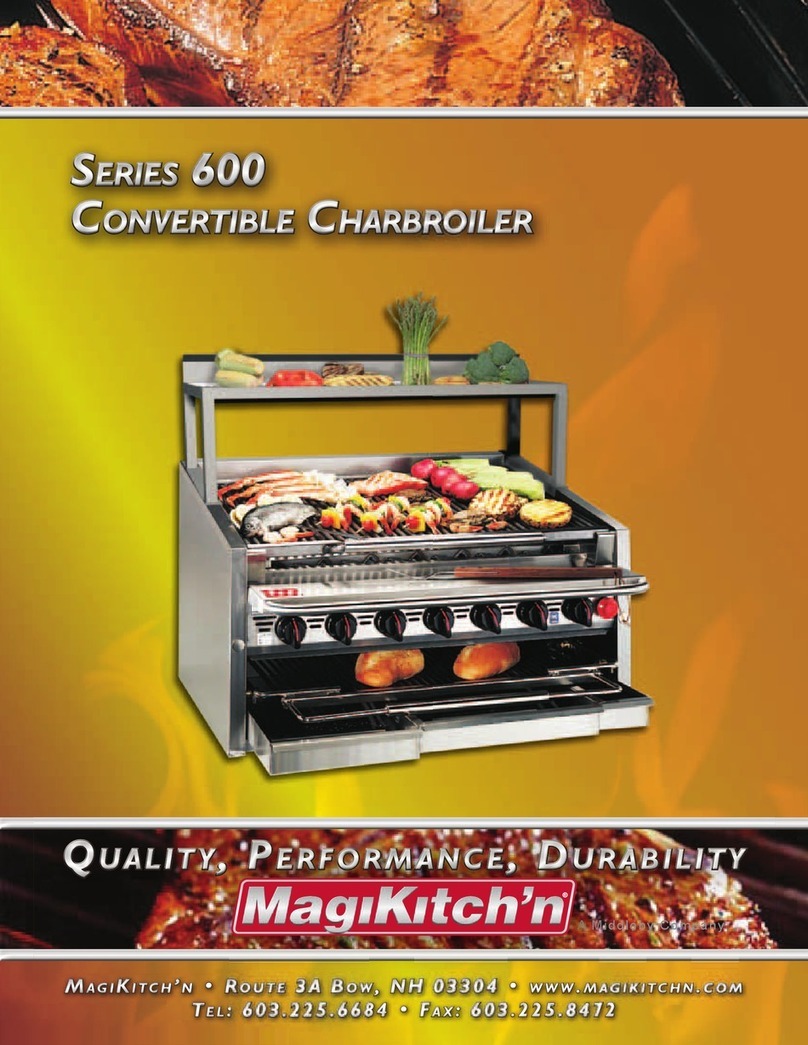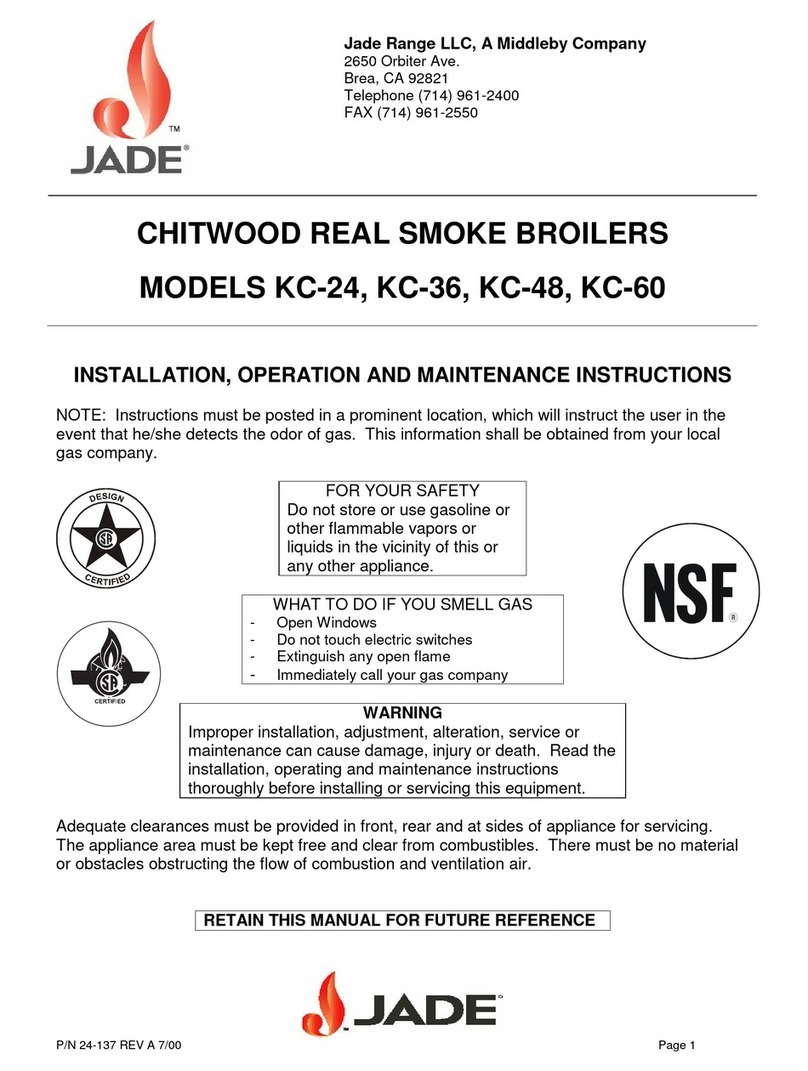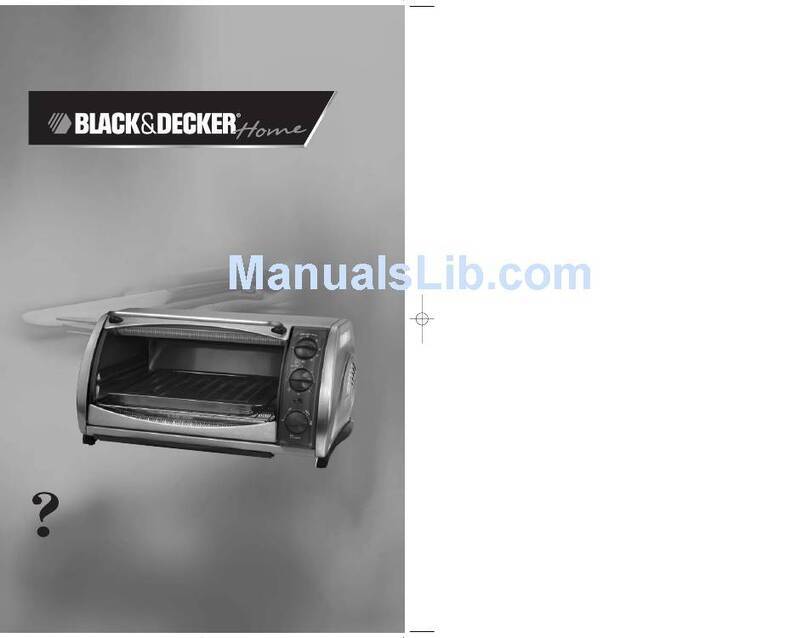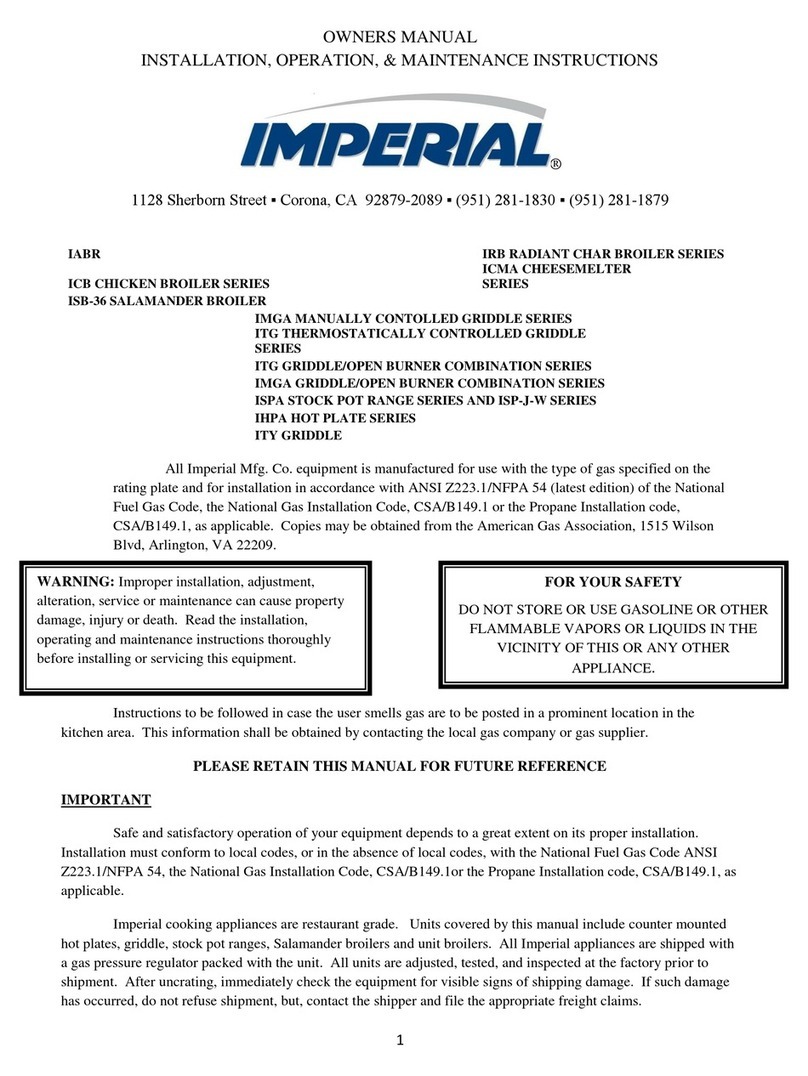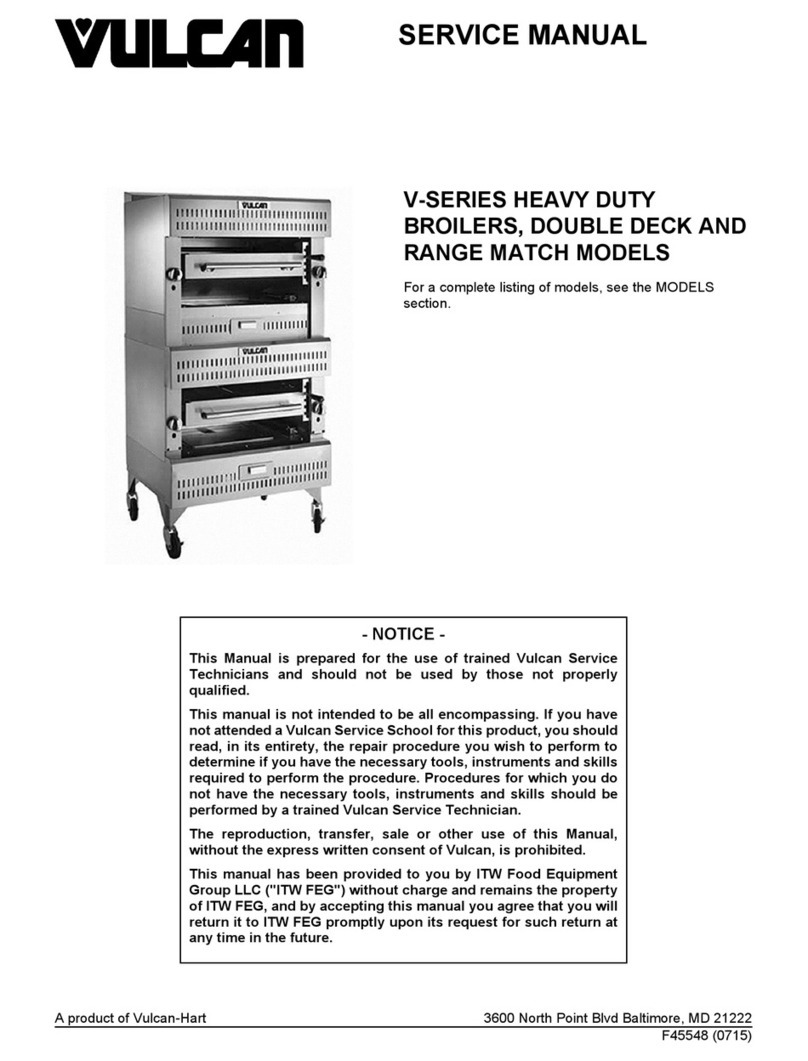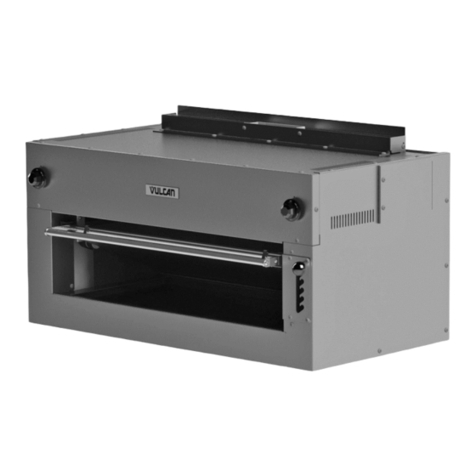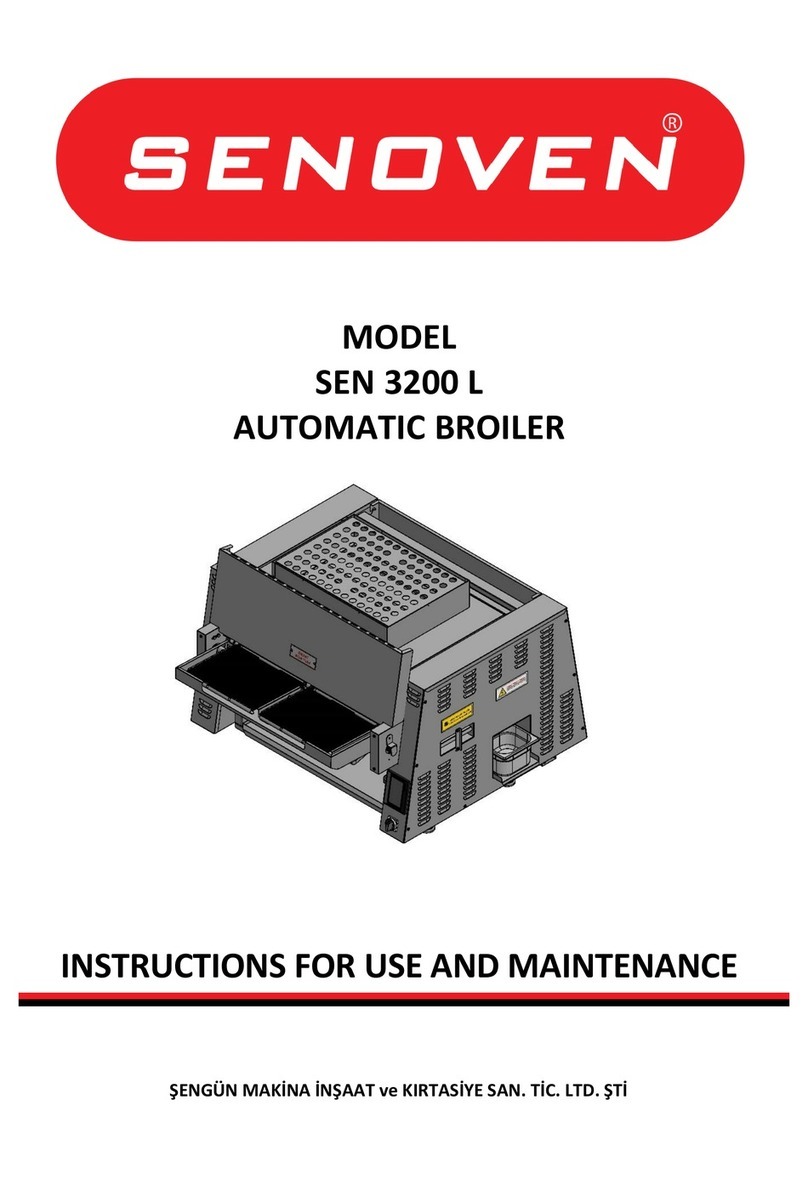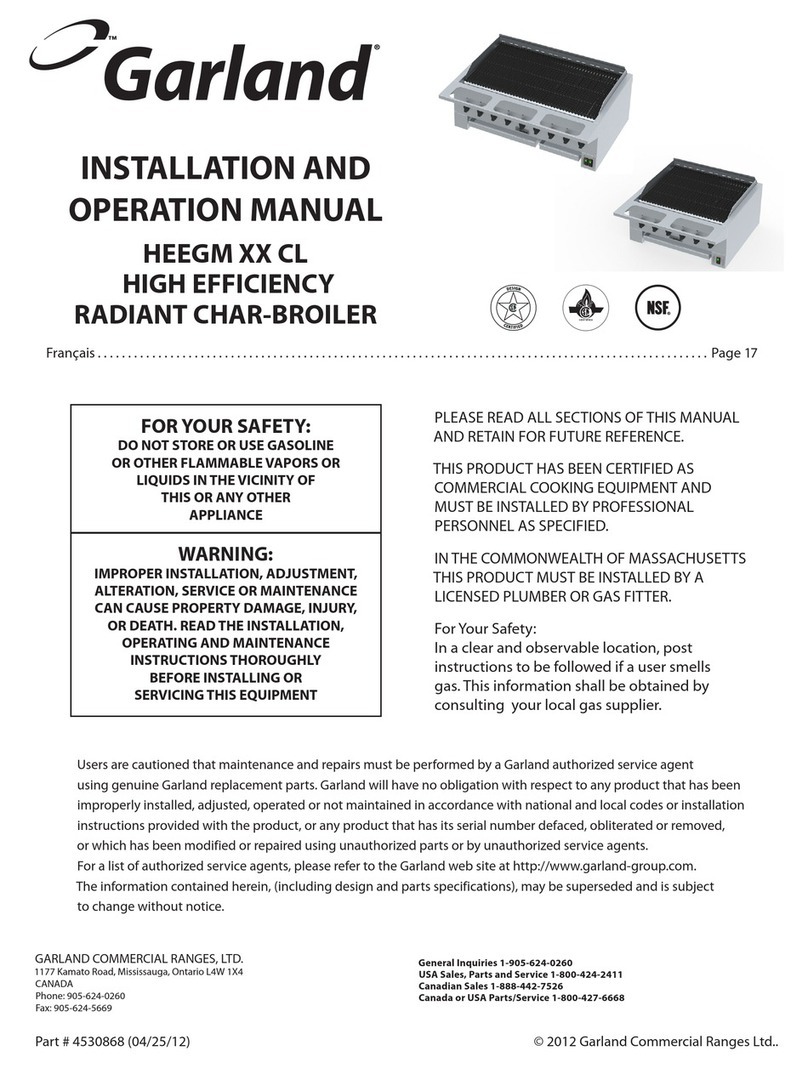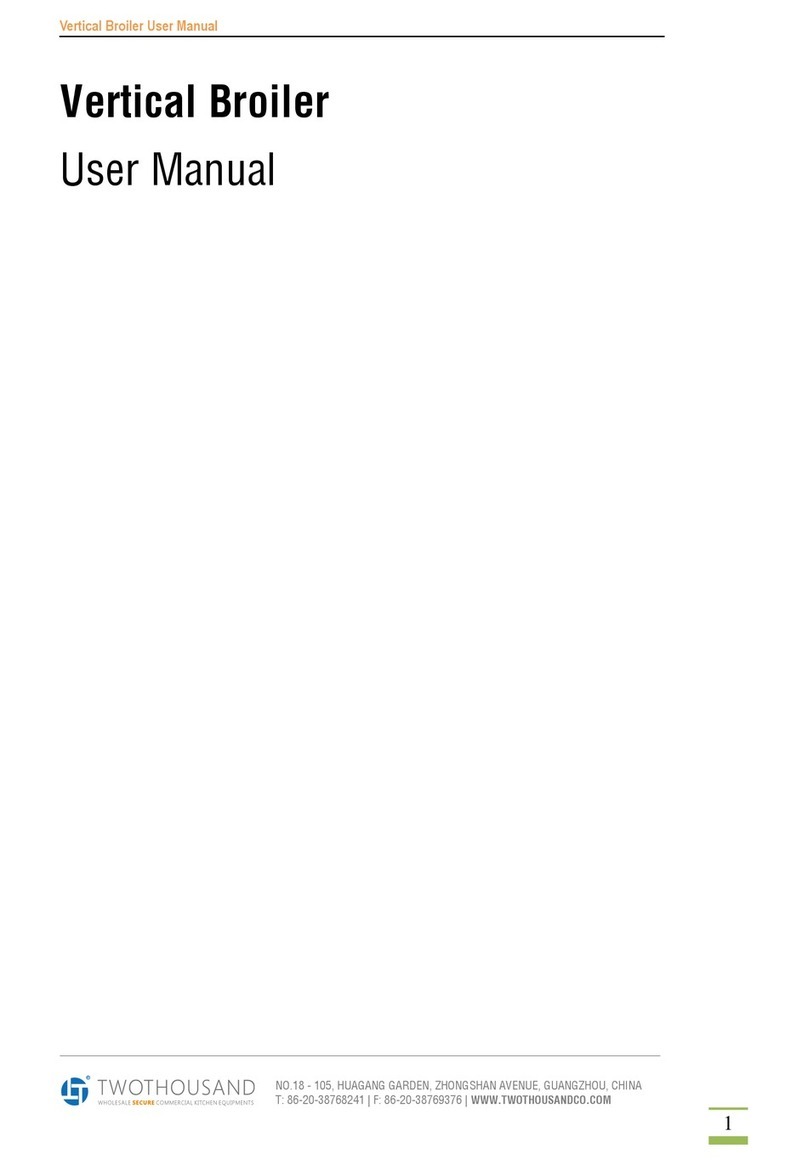
4
INITIAL PILOT LIGHTING
All Imperial Mfg. appliances are adjusted and tested before leaving the factory, effectively matching them
to sea level conditions. Adjustments and calibrations to assure proper operation may be necessary on installation to
meet local conditions, low gas characteristics, to correct possible problems caused by rough handling or vibration
during shipment, and are to be performed only by qualified service personnel. These adjustments are the
responsibility of the customer and/or dealer and are not covered by our warranty.
Check all gas connections for leaks with a soapy water solution before lighting any pilots. DO NOT USE
AN OPEN FLAME TO CHECK FOR LEAKS. Putting an open flame beside a new gas connection is extremely
dangerous. Before lighting any pilots, make sure that burner valves and thermostats are turned “off”.
LOG LIGHTER
Log lighter burners are equipped with constant-burning pilots. These are to be manually lighted
immediately after the gas is turned on and the systems is checked for leaks. Log light pilots are provided for each
burner and can be rechecked for proper adjustment down through the top grate. Adjustments can be made with a
screwdriver to the pilot valve accessible through the valve cover.
FINAL PREPARATION
A. TOP SECTION
New units are wiped clean with solvents at the factory to remove any visible signs of dirt, oil, or
grease remaining from the thin film or nontoxic rust protestant. Food preparation surface should be washed
thoroughly with hot, soapy water before being used.
The top grates should be removed and washed before use. With these removed, it will be possible
to remove any plastic tie cords holding the burners in place.
OPERATING AND ADJUSTMENT
1. Place gas control knobs in the “OFF” position.
2. Remove bottom ash can.
3. Light pilots from underneath.
4. Turn main gas “ON” and “OFF” several times and observe the flames on the log-lighter. If flames are
yellow and soft, open the air shutter slightly or until yellow disappears. If flames seem to blow or lift from
burner port holes, close the air shutter until this does not occur. Secure air shutter after burner has been
adjusted. All broilers are factory adjusted, but gas conditions vary slightly form one locality to another.
5. Turn gas burners “ON”. The burner should be left on full to ignite wood. Once the mesquite wood has
started glowing, the burner can be shut “OFF”. Often, only the bottom portion of wood will become totally
red, with the upper layer becoming partially red. This provides adequate radiation for superior Mesquite
Wood Char-Broiler performance.
6. Be sure to preheat the unit for about 20 minutes before cooking on the Mesquite Wood Char-Broiler, than
simply place the foods to be broiled on the top grate, allowing somewhat less time than usually required on
open griddles. Turn foods when brown on underside, with the appetizing broiler marking, so popular with
the public and continue to cook on opposite side to desire degree of doneness.
7. The area of greatest heat is at the back and center portion of the broiler. Use this to your advantage. For
instance, if you have completed broiling meats, and are not ready to serve them, simply move meat to the
front section of the grate where they will remain hot, but will not become more done.
CAUTION
When lighting pilots and checking for leaks, do not
Stand with your face close to the combustion chamber



